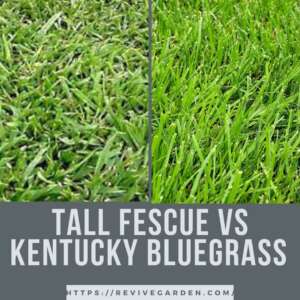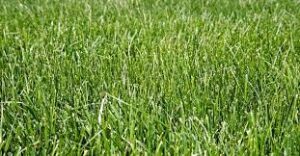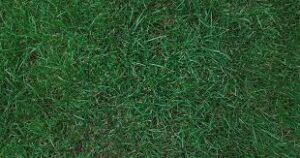Table of Contents
 Do you know Tall fescue vs. Kentucky Bluegrass ? Both are the cool category of plants, and when you look at them, they look quite similar. But we need to dig into the differences and similarities if we want to grow them right.
Do you know Tall fescue vs. Kentucky Bluegrass ? Both are the cool category of plants, and when you look at them, they look quite similar. But we need to dig into the differences and similarities if we want to grow them right.
There seems to be considerable confusion about Tall fescue vs. Kentucky Bluegrass. The confusion arises because tall fescue and Kentucky Bluegrass are found in turf mixes in many parts of the country. Today, we will discuss the difference between tall fescue and Kentucky bluegrass and tell you what factors you should consider when deciding which grass you should plant on your lawn.
Tall Fescue vs.Kentucky Bluegrass – Ridiculously Simple Ways
To say that Tall Fescue is superior to Kentucky bluegrass would be an understatement. The truth is, it’s not even close. If there is a lawn that deserves grass, above all others in the world of grasses, that is tall fescue. And if there are two members of the ‘tall fescue’ family, they would be big and little (also known as slender) creeping red fescue.
Characteristics of Tall Fescue Grass
Tall Fescue is a cool-season turfgrass that has been widely used as a residential and commercial turfgrass around the United States. It is most commonly used in the country’s southern regions because it tends to be more heat tolerant than other grasses. Tall Fescue also has a coarse texture which makes it more durable than other grasses, making it an ideal choice for sports grounds and playgrounds.
The color of tall Fescue ranges from olive green to blue-green with narrow stripes or spots of darker green or purple. The blades are flat and grow up to 3 inches long when mature. The leaves contain awns that help shed water from the plant during wet periods and provide insulation during dry periods.
Tall Fescue Identification Features
- Tall fescue grass has deep roots, which help it survive drought conditions and low fertility levels better than Kentucky bluegrass.
- The blades grow up to 2 inches long and are wide at the base with rounded tips.
- The leaf blades are coarsely textured with wavy outlines along the edges.
- The color can vary from light green to dark green depending on sunlight exposure.
- In spring, tall fescue produces short racemes (flower clusters) covered in tiny flowers that turn into seed heads during the fall months.
- The tall fescue leaves are deep green and waxy, which makes them appear shinier than other types of grass.
- The blades grow in clumps rather than spreading across the ground like bluegrass or rye.
- Each blade has two sides: one side has a smooth edge while the other has a jagged edge.
Tall Fescue Growth Habits
Tall fescue loves full sun and grows well but can also tolerate partial shade during hot summer months when temperatures exceed 90 degrees Fahrenheit (32 Celsius). It prefers well-drained soils with moderate fertility levels but will accept poor conditions such as dry soil or compacted soil.
Qualities of Tall Fescue

In the warm season:
Tall fescue (Festuca arundinacea) is a long-lived, warm-season grass that has an extensive root system and is best adapted to the Deep South.
It is drought tolerant and requires little supplemental water once established.
In the cool- Season:
Tall fescue can be used in turf mixtures with other cool-season grasses such as perennial ryegrass or Kentucky bluegrass or as a stand-alone turfgrass species.
Well-Drained soil:
I t loves to grow in full sun and moderate to high fertility levels. It prefers well-drained sites with good soil moisture throughout the growing season.
Fungal diseases from wet soils:
Tall fescue does not tolerate wet soils for prolonged periods of time because it can develop fungal diseases more easily than other turfgrasses under these conditions.
Needs Mowing Regularly:
Tall fescue is not tolerant of traffic and should be mowed on a regular basis to keep it from becoming too coarse or shaggy looking after several years of growth.
NOTE:
If you are planning for the type of grass in your landscape design, make sure you have enough room for frequent mowing and proper maintenance activities such as aeration and topdressing with composts or nitrogen-containing fertilizers.
Characteristics of Kentucky Bluegrass
- The Kentucky bluegrass plant has fine, slender leaves that grow up to 3/4 inch long.
- The leaves usually have three distinct veins that run parallel to each other on each leaf blade.
- These veins are easy to see when looking at a single leaf under magnification.
- The stem of Kentucky bluegrass is thick, upright, and tufted (clumped).
- Its color ranges from light green to grayish-green depending on the environment it’s grown in.
- The stems often turn purple during late summer when exposed to sunlight. Branches grow up to 1/2 inch long, with blades growing up to 4 inches wide.
- It grows well on most soil types, including sandy, loamy, and clay soils, with pH levels between 5.5 and 7.5 (neutral pH).
Kentucky Bluegrass Varieties

There are several varieties of this cool-season grass available for home lawns:
- Piedmont Bluegrass
- Fine-Leafed Bluegrasses
- Northern Kentucky Bluegrass
The best variety in Kentucky Bluegrass is:
Northern Kentucky Bluegrass:
Northern Bluegrass, also known as Kentucky bluegrass, is a cool-season grass native to Europe and Asia. It’s best adapted to northern climates with cold winters and warm summers. Northern bluegrass has an upright growth habit, making it great for sports fields and lawns where people will walk on the grass or play games. It also has a coarse texture and dark green color that makes it look more like natural grass than other types of turf grasses.
Kentucky Bluegrass Qualities
Kentucky bluegrass thrives in moderate climates where temperatures don’t get too hot or too cold for long periods each year. In areas with mild winters, you can mow this turf up to three times per year (more frequently if needed).
However, when grown in colder regions, you should only mow once per year before winter sets in because this type of turf will go dormant as temperatures drop below freezing point.
Kentucky bluegrass is a low-maintenance grass and requires little fertilizer or water. It can mow it as low as 1/2 inch without damaging its appearance or growth habit.
It has a deep root system with rhizomes (underground stems) that are long and slender. This characteristic allows Kentucky bluegrass to tolerate drought conditions better than other cool-season turfgrasses like tall fescue or perennial ryegrass.
Conclusion
This article has discussed the characteristics and benefits of both tall fescue and Kentucky bluegrass. Both types of grass have their own unique qualities, and it is important to understand the differences before you decide which is the best fit for your lawn.
